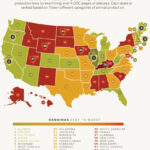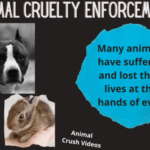Animal cruelty, as defined in the Canadian legal framework, is an abhorrent act that inflicts unnecessary suffering on animals. Section 445 of the Criminal Code of Canada outlines various forms of cruelty, ranging from abandonment to excessive beating. Animals, often considered companions or sources of labor and sustenance, are protected under the law, yet the unfortunate reality is that instances of abuse persist across the nation. Understanding the nuances of animal cruelty laws, the investigation processes, legal penalties, and potential reforms is essential in tackling this inhumane issue.
To grasp the concept of animal cruelty, one must consider the many dimensions it encompasses. It is not merely an act of violence; it tends to reflect broader societal attitudes towards non-human beings. Individuals who engage in such acts may do so for myriad reasons—impulsivity, lack of empathy, or desensitization. Furthermore, acts of cruelty are often indicative of deeper societal issues, such as poverty, mental health struggles, or systemic neglect. Thus, the fascination surrounding animal cruelty does not solely arise from the cruelty itself; it exists at the intersection of human behavior, societal norms, and cultural values.
The legal framework surrounding animal cruelty in Canada is delineated by two principal statutes: the Criminal Code and the Animal Welfare Act. The Criminal Code specifically covers actions causing unnecessary suffering to animals and provides a spectrum of offenses—from serious charges of animal fighting to lesser infractions involving neglect. The Animal Welfare Act complements these provisions with a focus on humane treatment and the duty of care owed to animals by humans.
When investigations into animal cruelty are initiated, they are typically carried out by local law enforcement or, in some instances, dedicated animal welfare organizations. These investigations often begin with reports or observations of suspected abuse. Hotlines, community alerts, and whistleblower tips are crucial in bringing attention to potential cruelty cases. Investigators utilize various techniques, such as surveillance, interviews with neighbors, and site inspections, to gather evidence and substantiate claims.
Once evidence has been collated, the next phase typically involves the criminal prosecution of those found guilty of infringing upon the established laws. The penalties for animal cruelty in Canada can be staggering. Convicted individuals may face hefty fines, incarceration, or both, contingent upon the severity of the offense. In egregious cases, the penalties can exceed five years of imprisonment. Moreover, courts may impose additional repercussions, such as banning the offender from owning animals for a specified duration, ensuring that further acts of cruelty are precluded.
Despite these legal measures, critics argue that the existing framework lacks the rigor needed to thwart animal cruelty effectively. Reports reveal that enforcement is often sporadic, with many cases slipping through the cracks due to inadequate resources or public apathy. Investigative bodies may lack training or funding to pursue complex cases that require extensive resources and time. As a result, pressing for reforms has become a cornerstone of the animal rights movement in Canada.
Advocacy for reform revolves around several key areas. First, there is a strong push for harsher penalties. Many animal rights activists argue that the current fines and prison sentences do not sufficiently reflect the gravity of the offense, proposing that an increase in consequences would act as a stronger deterrent against potential offenders. Furthermore, a reevaluation of law enforcement training could pave the way for more effective investigations in suspected cases of cruelty.
Another pressing concern relates to the promotion of public awareness. Increasing awareness about the signs of animal cruelty and the importance of reporting suspicious behavior can empower communities to take a stand. Educational campaigns aimed at schools, local communities, and social media can play a pivotal role in reshaping perceptions about animal welfare. When societal norms shift towards valuing compassionate coexistence with animals, we may witness a decrease in the prevalence of cruelty cases.
Moreover, modifying current legislation to ensure that it encompasses all forms of animal distress could help create a more comprehensive legal framework. Presently, the gaps in legislation often leave animals vulnerable. By broadening definitions of cruelty or neglect, lawmakers can close loopholes that allow offenders to evade accountability.
Lastly, fostering collaboration between animal welfare organizations and law enforcement agencies can bolster the effectiveness of investigations. Strengthened partnerships can facilitate knowledge-sharing, resource allocation, and joint inquiries that harness the strengths of both sectors. By working harmoniously, these entities can enhance their capacities to combat animal cruelty more effectively.
In conclusion, the issue of animal cruelty in Canada encapsulates far more than isolated acts of violence against animals; it serves as a reflection of our societal values and interconnectedness with non-human beings. The existing legal frameworks, while crucial, require continual evaluation and reform to ensure that they remain robust against evolving perceptions and practices surrounding animal welfare. Collective action—spanning legal reform, public education, and community engagement—stands as the linchpin in the fight against animal cruelty. It is incumbent upon society to galvanize efforts and set forth a vision where animals are not merely protected by law but revered within our cultural fabric.







